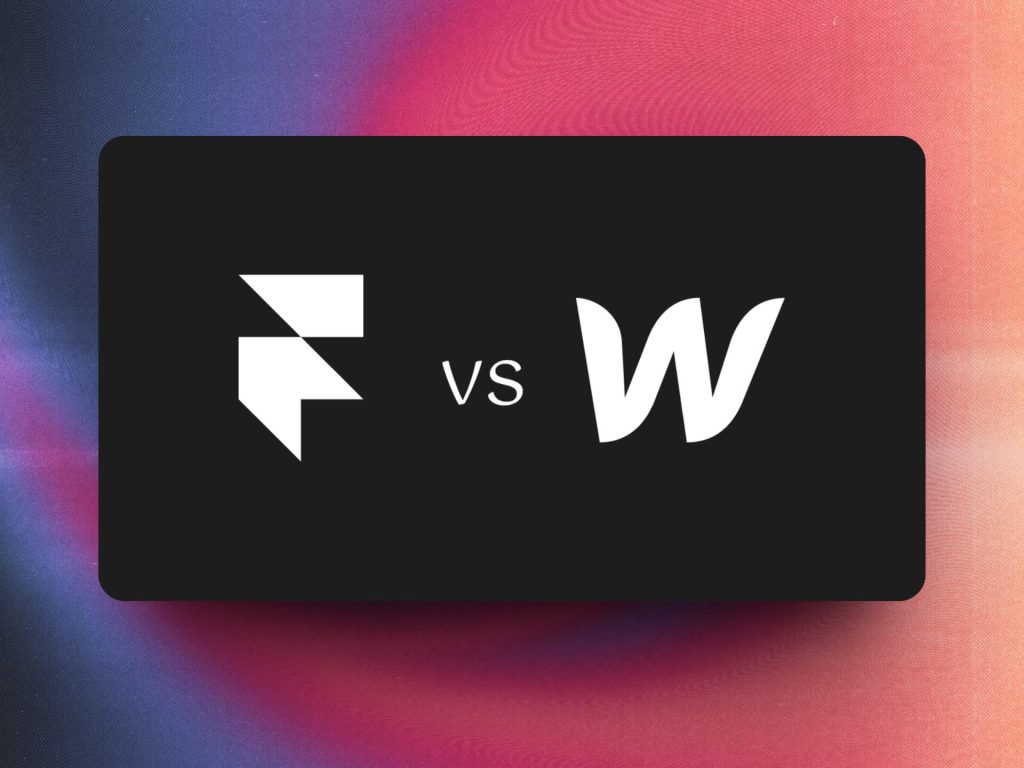Whereas both Framer vs Webflow are highly used for various web design projects. But, they are rather different in the kinds of users they attract and the kind of services they provide.
If you align with the designer who enjoys using animations or a developer who prefers to code less, these platforms boast of these strengths.
Webflow and Framer integrate with content management systems, improving the way dynamic content is managed. They make working with the blogs and product descriptions much easier to manage as the updates can be made with ease.
However, the choice between Webflow vs Framer may be rather difficult. To justify the decision, it is essential to understand which benefits each of them provides in web development.
Webflow vs. Webflow Framer: Key Similarities
Before we get into the differences between Webflow and Framer, let’s explore where these two platforms overlap:
No-Code Platforms:
Webflow and Framer are both no-code tools aimed at assisting you in creating websites without much coding experience. If you like one of them, you might find the other is a good option because it is easy to use and has a small gradient in difficulty.
Responsive Design:
An essential characteristic of Framer or Webflow platforms is the use of responsive design. This means that the layout of your website will be easily viewable on any device whether it is a desktop, a tablet or even a mobile phone. Regardless of how your audience perceives your site, it will adapt accordingly.
Combination of resources:
Both Webflow vs Framer support integration with content management systems (CMS). This makes things like maintaining and updating blogs or listings easier and more efficient. You don’t have to juggle too many tools to keep your site up to date.
Prefabricated designs and patterns:
Both platforms offer a variety of pre-built features and templates to get you started quickly. These fixes simplify the process, allowing you to quickly update and customize your website. For Framer, working with experienced designers can further accelerate development and improve results.
These are the main similarities between Framer vs Webflow. Now, let’s explore the key differences that set these platforms apart!
Webflow vs. Framer: Key Differences
We are here to assist you in deciding between two platforms that you are likely to find quite similar, which are Webflow and Framer. Every network has its unique characteristics; that is, it is better at something.
Let us now compare the two sets of data or see who among the two is ahead or superior.
Design Capabilities:
Webflow: Webflow is famous for its quite effective and innovative visual editor. It offers solutions to build individualized and business-like websites. It can allow you to build intricate designs, make sure that they work for the device they are being used on, and add interactions in a programming language without programming.
Framer: It is also very useful in adding dynamic and interactive styles to your layout as we will see in the subsequent sections. It is ideal for adding life to normally unanimated designs and for enhancing user interfaces. It lacks the level of layout customization that is seen in Webflow but its emphasis on interactivity makes it unique.
Development Tools:
Webflow: Webflow is equipped with many tools starting from the robust CMS, going through the e-commerce capabilities, up to the opportunity to include the custom code. It is ideal for full-service projects where both the design and development of a project are needed.
Framer: The Framer is more centered on design and prototyping. Although it has coding features it does not give the developers as many tools as Webflow. It is convenient for trial with interactivity and animation, however, may require additional tools for large-scale development.
Collaboration:
Webflow: Webflow also has team management features, including version history and workspace, where members of the team can share. This is especially helpful for large groups of people working on intricate tasks; everyone will be in order and do things in the same way.
Framer: Framer also supports real-time collaboration of team members in different projects. It is useful for design teams to have this feature because it accelerates creativity and ensures that everyone is on the same page.
Accessibility and SEO:
Webflow: Responsive design and Search Engine Optimization are at a high level in Webflow. It provides facilities for enhancing search engine optimization and inclusion. Meta tags, alt text, and HTML can be tweaked to personal preference. This makes it a priority when the priority is to be among the top choices.
Framer: Framer offers only the most generic SEO settings, which are not even close to the possibilities of Webflow. Its primary concept is not too much related to its accessibility; it may be a con if one requires sophisticated SEO and accessibility options.
Customer Support:
Webflow: Webflow is well documented, has a good community of users, and support available through both the chat and email. This makes it easier to seek assistance and solve problems.
Framer: Webflow has more resources for support than Framer, although Framer is not lacking in this regard and has more support at present than it did in the past. Although the community is alive, there is a lack of documentation and available support choices. This may change as Framer goes on to evolve further.



